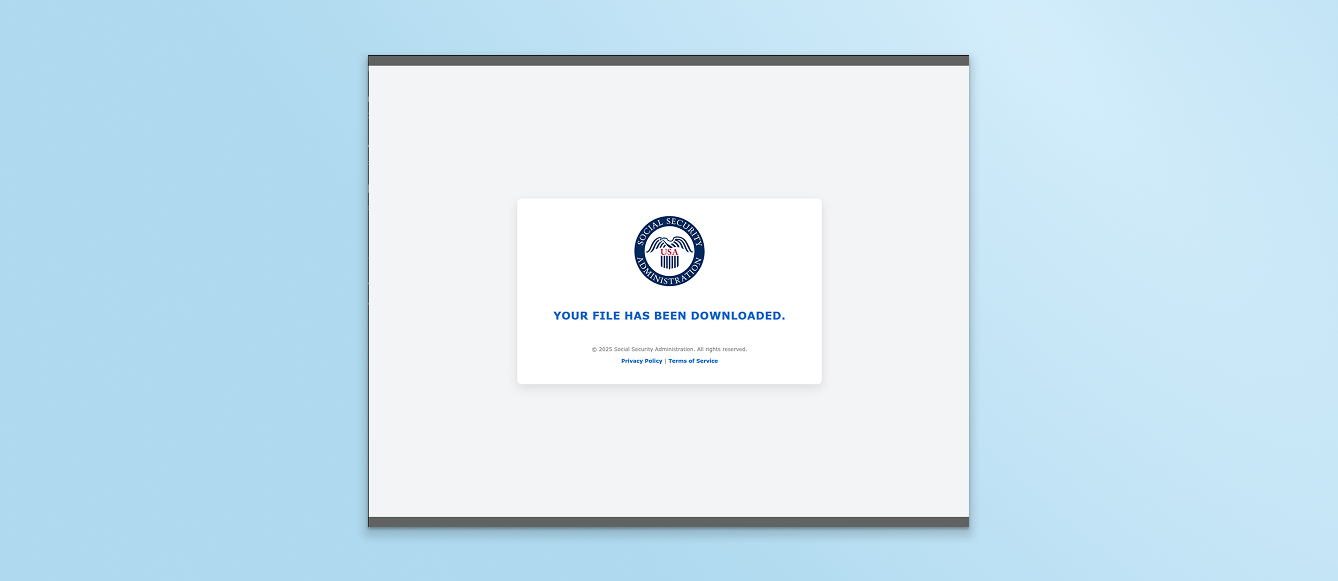
When a user clicks a link from their personal email on a corporate-managed device, security leaders often hope the worst case is a harmless lure that doesn’t impact the organization’s security. But as a recent incident demonstrated, the stakes can be significantly higher.
A user received an email in their personal inbox, complete with a link leading to a domain spoofing the Social Security Administration, sas-govservice[.]com instead of the legitimate ssa.gov—and immediately triggered an auto-download of a remote access tool. Thankfully, browser security controls prevented the suspicious download, but the implications were clear: Personal SaaS use on corporate devices creates enterprise-level blind spots that bypass even well-implemented controls.

Shadow SaaS introduces enterprise-level risk you can’t manage if you can’t see it, and personal accounts used in work browsers quietly expand your attack surface.
The Expanding Risk of Shadow SaaS in the Browser
Shadow SaaS isn’t just unsanctioned business tools, it’s also the unmonitored everyday personal services employees access in their browsers:
- Personal email
- Personal cloud storage
- Consumer-grade productivity tools
- Private messaging and social platforms
- Free AI tools
These sessions operate outside the reach of corporate email security, CASB, and most endpoint controls. And as this incident showed, they can lead directly to:
- Phishing attacks
- Drive-by malware downloads
- Unauthorized data movement
Without browser visibility, Shadow SaaS, shadow data, and personal-account use remain real risks that stay hidden from security teams and tools.
Why Browser Visibility Is No Longer Optional
For security teams focused on operational readiness, browser visibility fills a critical gap by showing:
- What sites users are interacting with
- When personal accounts intersect with corporate devices
- When users encounter impersonation sites or risky downloads
- How downloads and authentication flows originate
- Behavioral patterns that signal broader shadow activity
This is the context needed to prevent, not just respond to, incidents.
How Keep Aware Helps Close The Browser Visibility Gap
Keep Aware provides the browser-level clarity that traditional tools miss without locking down user productivity. In a condensed view, Keep Aware enables:
1. Shadow SaaS Discovery
Visibility into personal email use, unsanctioned apps, cloud drives, AI tools, and consumer services accessed on corporate devices.
2. Browser-Native Threat Detection
Real-time detection of credential theft attacks, suspicious downloads, social engineering attempts, and other high-risk browser events.
3. Fast, Contextual Investigations
A clear record of the user’s browser session leading to the event, revealing the origin, intent, and surrounding behavior of incidents like this drive-by download.
4. Real-Time Governance and User Guidance
In-moment policy enforcement that stops risky user actions and provides clear, contextual nudges that reinforce Acceptable Use expectations as users work.
Conclusion: Shadow SaaS Isn’t Going Away—But the Blind Spot Can
The drive-by malware attempt from a spoofed Social Security Administration domain wasn’t a one-off, it was a predictable outcome of unmanaged personal activity in the browser. With the right visibility, cybersecurity teams gain the ability to:
- Detect shadow browser activity
- Mitigate risks before they escalate
- Understand incidents with full context
- Strengthen operations without adding friction
Shadow SaaS is part of the modern workplace. Browser visibility ensures it doesn’t become a hidden liability.
Learn why tackling shadow SaaS requires navigating the complexities of instance-level risk within approved SaaS platforms in Keep Aware’s 2025 State of the Browser Security Report.
IOCs
sas-govservice[.]comhttps[:]//sas-govservice[.]com/ssa/SSA_Yearly_Projection[.]exe



%20(1).png)

